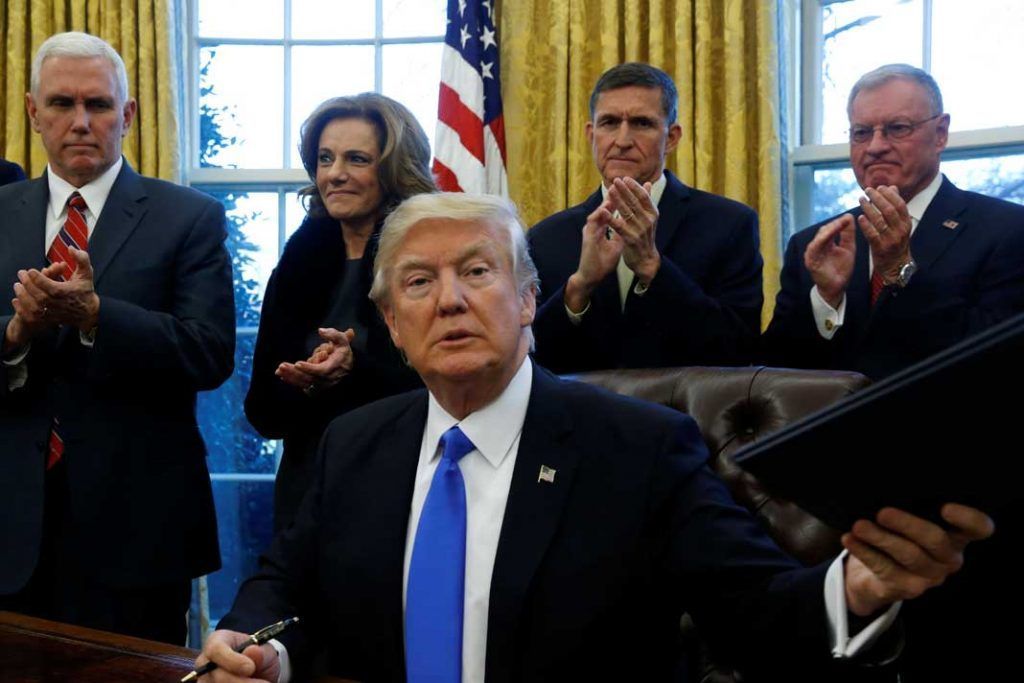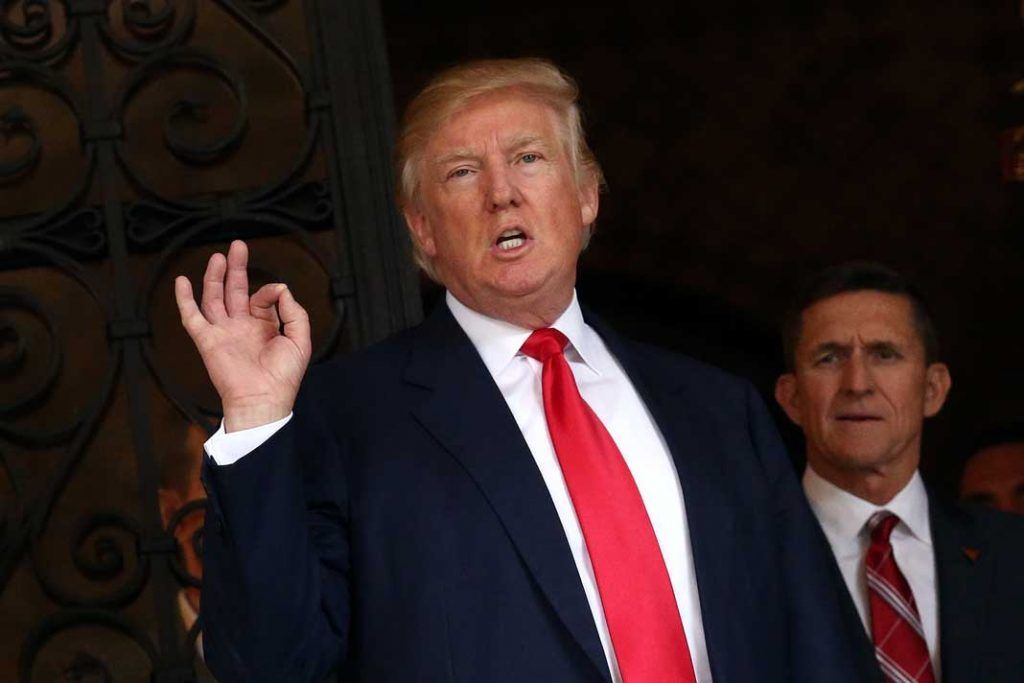February 06, 2017
By Reza Taghizade
In his first week in office, President Trump signed an executive order on immigration barring citizens of seven Muslim-majority countries, Iran, Iraq, Somalia, Yemen, Libya, Syria, and Sudan, from entering the United States for 90 days, and suspended admission of all refugees for 120 days. The travel ban has a bigger impact on Iran than the other six countries because there are currently over one million Iranians living in the US, including 12,000 university students.

Taking a tougher position against Iran and defeating ISIS (The Islamic State of Iraq and the Levant) are on the top of Trump’s foreign policy agenda. Both initiatives enjoy wide support from large segments of American public and Republican lawmakers in Washington.
In his first public statement since taking office, Michael Flynn, national security advisor to President Donald Trump, stated on February 1, 2017 that the U.S. was “officially putting Iran on notice.” The warning follows an Iranian missile test and an attack on a Saudi warship by Tehran-backed Houthi rebels in Yemen.
The Trump team is undoubtedly aware that its confrontational policy towards Iran will solicit a reciprocal response from Tehran that might lead to escalation of hostilities between the two countries. The new U.S. administration might conclude that the only way to curb Iran’s sphere of influence in the region would be through military action. That decision would follow a pattern similar to operations carried out by the U.S. in the 1980s, including Operation Earnest Will (July 24,1987- September 26,1988) that involved American navy protecting Kuwaiti-owned oil tankers against Iranian attacks, and Operation Nimble Archer on October 19,1987, during which U.S. naval forces attacked two Iranian oil platforms in the Persian Gulf.

Despite Iran’s inferior military strength, officials of the Islamic republic never miss an opportunity to exaggerate the country’s limited defence capabilities, or to boast about their resolve to defeat the “enemies” of the regime. A hallmark of the Islamic republic is its futile attempt to deceive the public by spinning a setback as a heroic victory over an adversary.
The Islamic republic has always found a face-saving way to back down from a fight when confronted by a formidable opponent. It accepted the UN Resolution 598 in August 1988, that ended Iran-Iraq war, it halted its nuclear programme with possible military dimensions in 2003, and signed the nuclear agreement with the P5+1 in July 2015. Nevertheless, the regime has had to face the consequences of its actions. In 1981, seven years after the release of American hostages held at the U.S. Embassy in Tehran for 444 days, Ayatollah Khomeini, under pressures from the Reagan administration, was forced to accept the terms of the ceasefire in Iran-Iraq war. In the same year, the USS Vincennes (CG-49) guided missile cruiser downed an Iranian passenger plane over the Persian Gulf on July 3,1988, killing 290 civilians. A comprehensive series of sanctions preventing Iran from selling its oil on the international market forced the Islamic republic to abandon its nuclear ambitions in 2015.
The Iranian authorities are acutely aware of America’s commitments to its allies in the Persian Gulf, some of whom have locked horns with Tehran in a regional power play. A year before signing the nuclear deal, while addressing a group of students at Tehran University, Foreign Minister Javad Zarif said, “The west is not afraid of our military capabilities. Do you really think the U.S., which can destroy our defence system with a single bomb, is afraid of our military? Do you think it is our military might that has prevented the U.S. from attacking us?” Zarif is keenly aware of the Islamic republic’s weak defencive capabilities, its inability to retaliate in an effective manner, and its vulnerable economy.
Following the signing of the nuclear deal and lifting of sanctions, the Islamic republic has used the released funds to invest heavily in reinforcing its military presence and political influence in Iraq, Lebanon, and Syria, and to bully the pro-western countries in the region.
The new U.S. administration seems to be focused on halting Iran’s activities in the region. Following a request from Washington, the UN Security Council held an emergency closed-door session to discuss Iran’s missile test. The newly appointed U.S. ambassador to the U.N., Nikki Haley, said, “We are not naive. We are not going to stand by. You will see us call them out, as we said we would, and you are also going to see us act accordingly.” President Trump followed-up by saying that when it comes to dealing with Iran “all options are on the table.”
Earlier this week, U.S., U.K., France, and Australia conducted war games in the Persian Gulf that simulated a confrontation with Iran. Contrary to previous occasions, Iran didn’t issue an official response to the drill. On January 3, 2017, Alcee Lamar Hastings, Democratic congressman from Florida, submitted a draft resolution to the House Foreign Affairs Committee asking it “to authorize the use of the United States Armed Forces to achieve the goal of preventing Iran from obtaining nuclear weapons.” The ultimate aim of the resolution is to give the U.S. president the authority to take military action against Iran without needing the approval of the Congress.
Although taking military action against Iran is not a priority for the U.S. and its allies in the region, it can be expected that the Trump administration will exert greater authority in the Middle East and will seriously consider taking military action against both ISIS and Iran.

